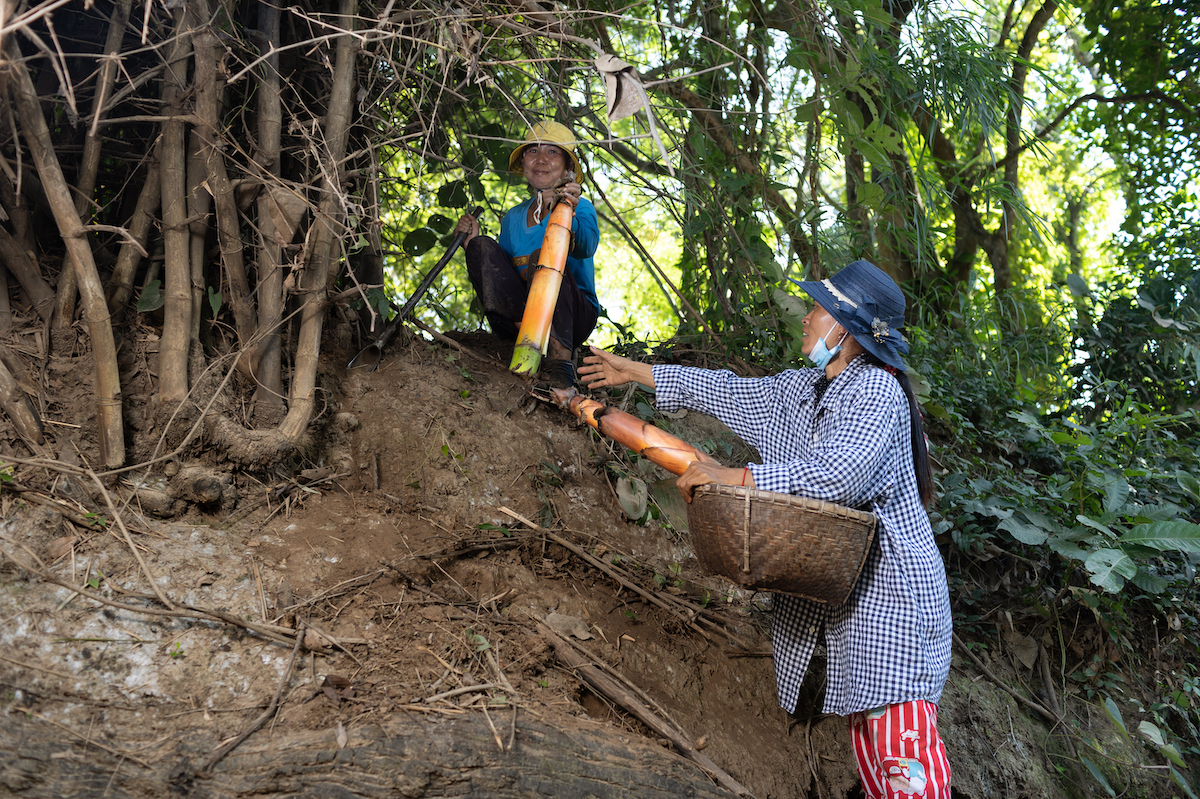Local communities and forests at COP27: What you need to know

Leading into this year’s UN climate talks, known as COP27, there has been much discussion on priorities and how emphasis on implementation as opposed to negotiation makes it different from previous ones.
With many of the painstaking methodological issues previously dragging down the process now resolved, COP27 is where the rubber hits the road, and countries must take steps to tangible action. Of course, this will be more challenging as a result of the current geopolitical context and the repercussions of the war in Ukraine.
Three main areas loom as the agenda is to be agreed upon. In broad strokes, these are adaptation, loss and damage, and mitigation actions to limit global heating to 1.5 degrees Celsius. The loaded sub-text underlying these areas is ratcheted financing and the tension between developing and developed countries on the willingness to meet prior funding promises of US$100 billion per year for adaptation.
Within that broader context, we spotlight five issues to watch out for at COP27.
1. The role of forests in tackling climate change
Forests received unprecedented levels of attention in the climate change negotiations at COP26. We expect this to continue at COP27 with increased recognition of the role of forests in climate change beyond being simply carbon sinks. In addition to water cycling, biodiversity, critical livelihood contributions and adaptation functions, the cooling effect of forests goes beyond their ability to absorb carbon dioxide according to a recent report by World Resources Initiative. Tropical forests provide a 50 percent greater impact on lowering global temperatures than is accounted for through carbon sequestration. The report suggests this can be explained in part through the process of “evapotranspiration" associated with forests. Therefore, it is critical that the role of forests in Nationally Determined Contributions (NDCs) and land use strategies reflects an approach to forest management that optimizes multiple benefits, not simply carbon sequestration or timber production.
2. Increased ambition in NDCs and inclusion of forests

COP26 was the first step in increasing ambition in NDCs since they were originally presented at the climate talks in Paris, in 2015. Given the insufficiency of the commitments to limit global heating to 1.5 degree Celsius, the Glasgow Climate Pact called for countries to issue stronger targets within the year. As we move into COP27, few countries have responded with new or revised NDCs, and those that have submitted have failed to demonstrate more ambition. According to Climate Action Tracker, only 24 of the 196 countries signatories to the Paris Agreement have submitted revised NDCs. Among these, only four are considered to have demonstrated a ratcheting up of ambition. The Asia-Pacific region performs well against the global average with half of all improved NDCs coming from the region—Thailand and Australia. While RECOFTC commends Thailand’s climate leadership, we encourage them to include land use and forestry sectors within the country’s NDC.
3. Glasgow Leaders' Declaration

Progress on the Glasgow Leaders’ Declaration on Forests and Land Use has largely failed to materialize at the rate that is needed. At the same time, however, it is cause for qualified praise to the Asia-Pacific region. The Forest Declaration Platform, established to track the Declaration’s pledges, released an assessment with stark results. To meet the Declaration’s goal of halting deforestation completely by 2030, the world needs to achieve a 10 percent annual reduction in deforestation rates. Since the Declaration at COP26 a year ago, deforestation around the world has declined at a rate well below this target. In 2021, the reduction in deforestation was 6.3 percent and in the humid tropics, forest loss decreased by only 3.1 percent. The bright point in the assessment, however, is that the Asia-Pacific appears to be doing relatively well in efforts to tackle deforestation. Tropical Asia is the only region on track for zero deforestation by 2030. Indonesia is the only country to cut deforestation annually for the past five years, and Malaysia reduced forest destruction by around 25 percent in 2021.
4. The role of Indigenous Peoples and local communities
Involvement of and direct benefits to Indigenous Peoples and local communities (IPLCs) were highlighted in Glasgow at COP26. Pledges were made of more than US$1.7 billion to flow over the following four years for IPLC-led climate solutions. However, it still remains unclear a year later as to whether and how, and to whom, these funds have been distributed since. We need greater transparency and accountability to ensure credibility. RECOFTC is proud to be a founding member of the Peoples Forest Partnership (PFP). PFP aims to leverage voluntary carbon markets to assure equitable, accessible, and culturally appropriate investment partnerships with IPLCs. The first call for applications for PFP membership was launched in October 2022.
5. Fine tuning Article 6 of the Paris Agreement on carbon trading
Finalization of the 'Article 6 Rulebook' at Glasgow was a significant milestone. Article 6 of the Paris Agreement details market mechanism functions for carbon trading. The Rulebook agreed in Glasgow set out eligibility requirements for credit issuance and resolved issues associated with the market mechanisms such as double-counting and the level of credit transaction proceeds to be directed to a Global Adaptation Fund. Negotiations will continue at COP27 with a focus on eligibility criteria for credits, methodologies for applying corresponding adjustments, the scope of disclosure obligations and the Clean Development Mechanism transition period among others. RECOFTC was pleased to see Thailand as one of the first countries to sign a bilateral deal for the transfer of Internationally Transferred Mitigation Outcomes under Article 6 with Switzerland in May 2021.
Much of the coverage of COP27 has highlighted the dire climate crisis and the insufficient progress. On a positive note, emission trajectories continue to fall along with deforestation rates, while commitments by the private sector and governments offer pathways to genuine systems shifts. However, these positive developments need to be scaled up and accelerated significantly, and clear and transparent accountability mechanisms must be in place. And the growing focus on the vital role of forests, and indigenous and local communities within the climate change discussions must remain front and centre.
###
Regan Pairojmahakij is a senior program officer on landscapes in a changing climate at RECOFTC.
RECOFTC's work is made possible with the continuous support of the Swiss Agency for Development and Cooperation (SDC) and the Swedish International Development Cooperation Agency (Sida).

